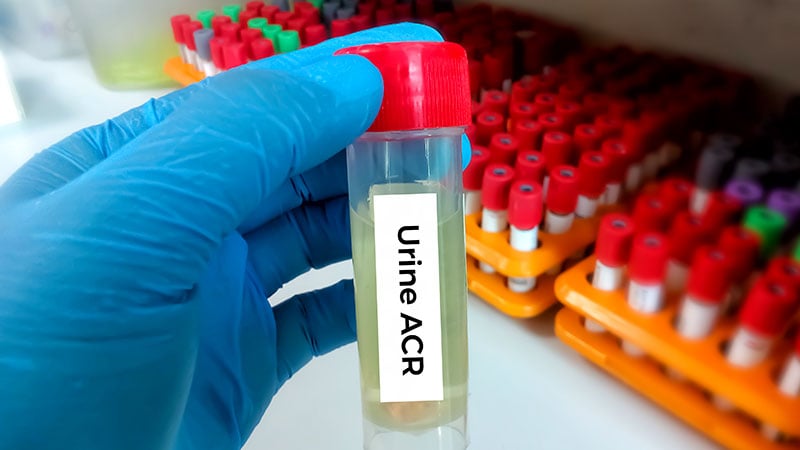NIST Develops Human Urine Standard for Kidney Health Assessment
Core Concepts
Development of a human urine standard by NIST for precise kidney health assessment.
Abstract
The US National Institute of Standards and Technology (NIST) has introduced a groundbreaking human urine standard to enhance the diagnosis of kidney disease. This standard, SRM 3666, provides accurate measurements of albumin, a crucial biomarker used in conjunction with creatinine to evaluate kidney health. The standardization program led by bioanalytical chemist Ashley Beasley-Green aims to ensure consistency and quality control in clinical urine samples, impacting individual health outcomes and the quality of care received.
Key Highlights:
Introduction of SRM 3666 for precise albumin and creatinine measurements in urine.
Importance of having standards in the same material as the clinical sample.
Calculation of albumin-to-creatinine ratio for each level of the new standard.
Impact on accurate clinical decisions and risk assessment for kidney disease.
Collaboration with other institutes to ensure accuracy and comparability of urine albumin measurements.
Potential influence on clinical guidelines and quality control in laboratories.
Future international studies to confirm the standard's suitability for medical community needs.
Detailed procedures outlined in the NIST special publication for the certification of SRM 3666.
New NIST Standard Will Improve Diagnosis of Kidney Disease
Stats
"A unit of the new standard reference material, SRM 3666, consists of four vials of frozen pooled human urine with four different levels of endogenous albumin, determined using the NIST candidate reference measurement procedure for albumin in urine and creatinine in urine."
"The SRM comes with a data sheet that gives measures of how much albumin and creatinine are in each vial."
Quotes
"The ideal standard is always in the same material as the clinical sample." - Ashley Beasley-Green
"We need precise clinical measurements so clinicians can make accurate decisions." - Ashley Beasley-Green
Key Insights Distilled From
by Marilynn Lar... at www.medscape.com 12-12-2023
https://www.medscape.com/viewarticle/new-nist-standard-will-improve-diagnosis-kidney-disease-2023a1000v4w
Deeper Inquiries
How can the implementation of this new standard impact the overall accuracy of kidney disease diagnosis?
The implementation of the new NIST standard for human urine, specifically focusing on albumin measurements, can significantly enhance the accuracy of kidney disease diagnosis. By providing precise measurements of albumin in urine, in conjunction with creatinine levels, clinicians can obtain more reliable information about kidney health. This standardization ensures that laboratories and healthcare providers have consistent and comparable data to make informed decisions regarding the diagnosis and management of kidney diseases. With accurate measurements, clinicians can better assess the risk of kidney disease and provide appropriate care to patients, ultimately improving health outcomes.
What challenges might arise in the adoption of this standard in various clinical settings?
Despite the benefits of the new NIST standard, several challenges may arise in its adoption across different clinical settings. One potential challenge is the need for laboratories and healthcare facilities to update their protocols and procedures to incorporate the new standard reference material (SRM). This may require additional training for staff and adjustments to existing testing methodologies. Furthermore, there could be resistance to change from healthcare professionals who are accustomed to using different measurement standards or techniques. Additionally, the cost associated with implementing the new standard and ensuring compliance with regulatory requirements may pose a barrier to widespread adoption in various clinical settings.
How can the collaboration between different institutes enhance the development and acceptance of such standards?
Collaboration between different institutes, such as the partnership between NIST, the National Institute of Diabetes and Digestive and Kidney Diseases, and the International Federation of Clinical Chemistry Working Group, plays a crucial role in enhancing the development and acceptance of standards like the new urine albumin standard. By bringing together experts from various fields, these collaborations facilitate the exchange of knowledge, resources, and best practices, leading to the creation of robust and widely accepted standards. Additionally, collaboration allows for the validation of standards through international studies and interlaboratory comparisons, ensuring that the standard meets the needs of the medical community and can be implemented effectively across different clinical settings. Overall, collaborative efforts strengthen the credibility and reliability of standards, promoting their adoption and use in improving healthcare practices.
0
